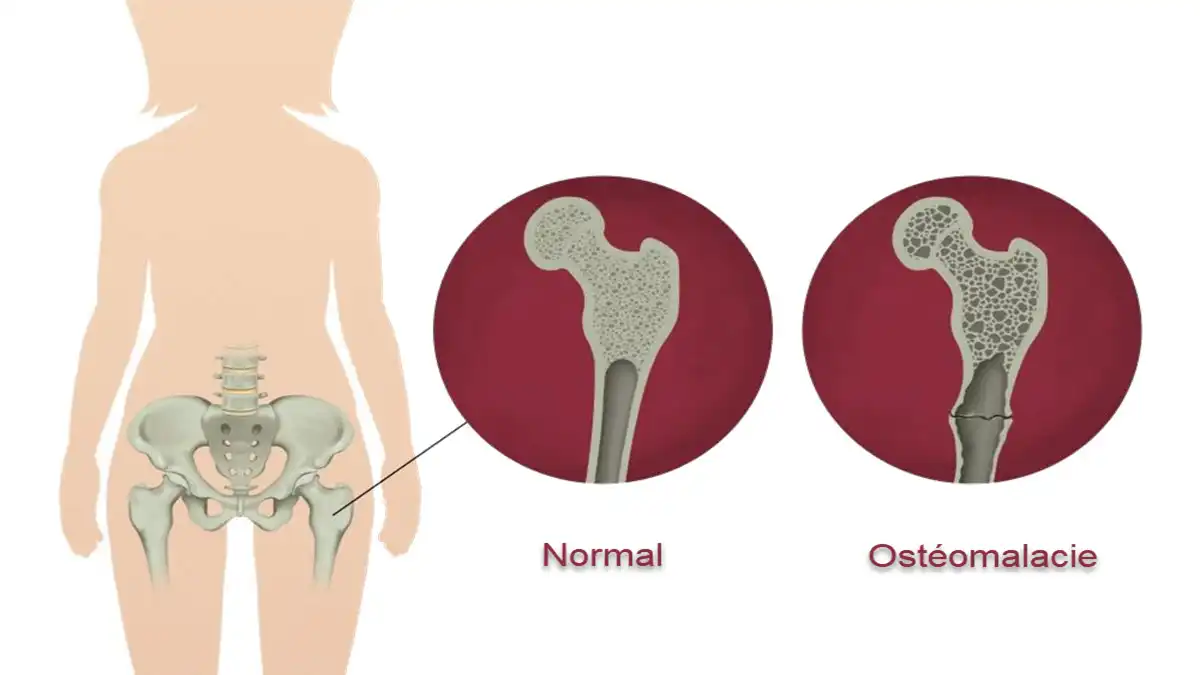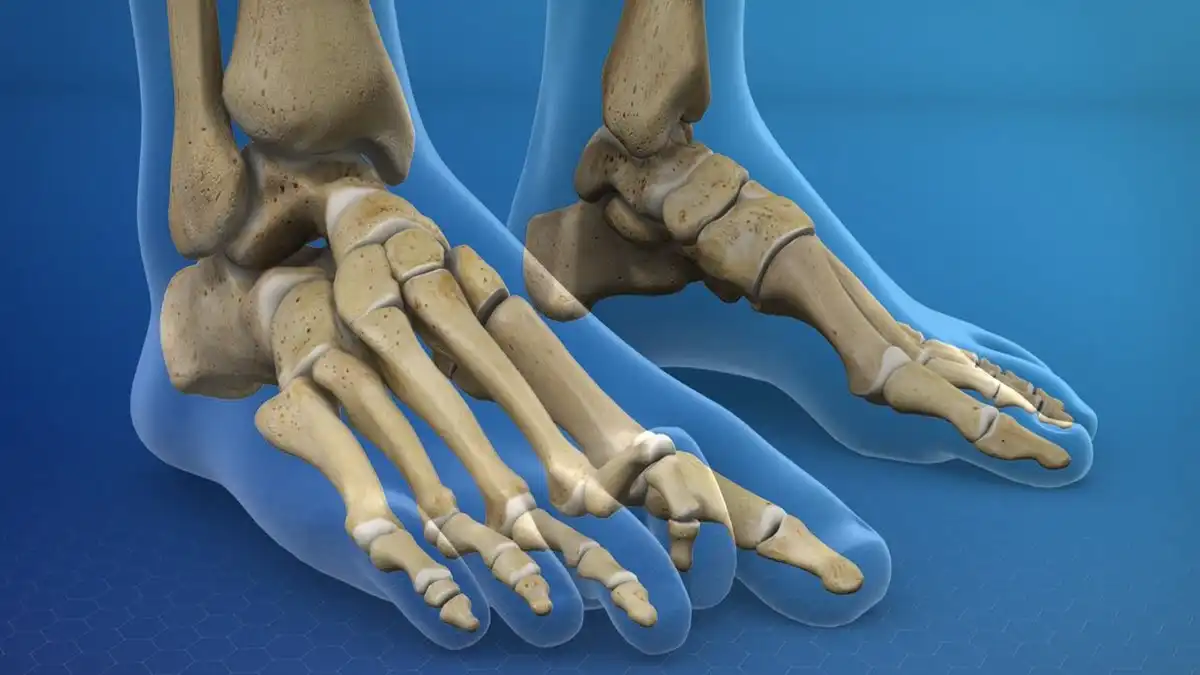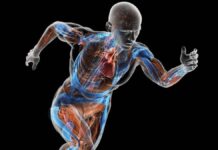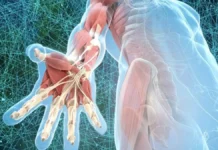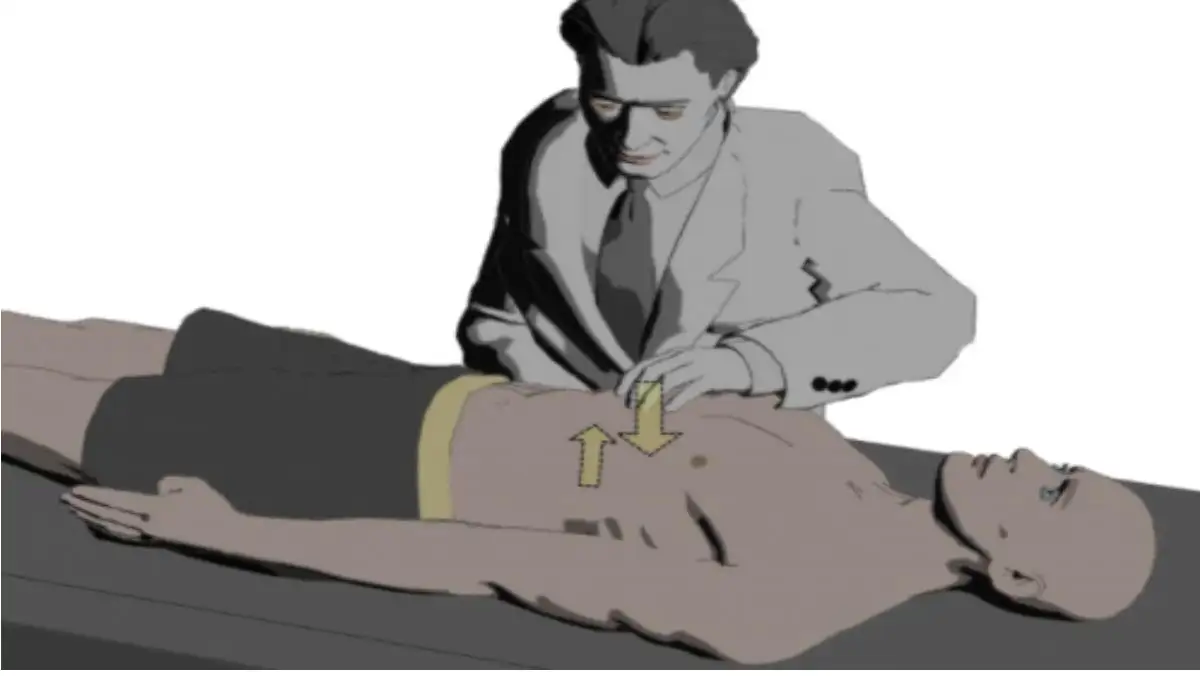The Evolution of Visceral Mobilization
The evolution of visceral mobilization in osteopathy has been a fascinating journey, primarily shaped by the pioneering work of Jean-Pierre Barral. Barral, a renowned osteopath and founder of the Barral Institute, has significantly contributed to the understanding and practice of visceral manipulation.
The roots of visceral mobilization can be traced back to Barral’s extensive anatomical studies and his deep appreciation for the interconnectedness of the body’s structures. He recognized the importance of addressing visceral restrictions to promote overall health and well-being.
Key milestones in the development of visceral mobilization include Barral’s groundbreaking publications, such as “Visceral Manipulation” and “Manual Thermal Evaluation.” These works not only documented his findings but also provided a framework for practitioners to integrate visceral techniques into their osteopathic practice.
Over time, visceral mobilization has evolved as more osteopaths have embraced its effectiveness in addressing a wide range of health issues. The approach emphasizes the importance of assessing and treating restrictions in the organs and their surrounding tissues, recognizing the impact these restrictions can have on the musculoskeletal and nervous systems.
The integration of modern research and technology has further enriched the field, supporting the evidence-based evolution of visceral mobilization. Ongoing collaboration and exchange of knowledge within the osteopathic community continue to shape and refine the practice.
Developed by Jean-Pierre Barral, physiotherapist and osteopath, visceral manipulation is a manual approach that treats tension in the soft tissue connections in and around the viscera. Jean-Pierre studied the connective tissue structures of the body, both on cadavers and on his patients, and was surprised to find that tension in one area could be transmitted to other areas of the body. He found that treating areas of tension in the abdomen around the organs helped people with orthopaedic problems, such as back and hip pain, because of the supporting structures (fascia, ligaments, etc.) that attach them to the skeletal system. Its aim is to restore movement to the tissues that surround and suspend our viscera, thereby relieving tension and limitations in the surrounding structures that may become painful as a result of changes in movement.

Visceral Mobilization Techniques
Visceral mobilization techniques, as developed by Jean-Pierre Barral, involve specific manual manipulations aimed at addressing restrictions and dysfunctions within the internal organs and their connective tissues. Let’s delve into the principles, applications, and variations advocated by Barral:
Principles
- Listening and Dialoguing: Barral emphasizes the importance of practitioners developing a keen sense of “listening” to the subtle cues and responses of the patient’s body. This involves a dynamic dialogue between the practitioner’s hands and the patient’s tissues to identify areas of tension or restriction.
- Gentle and Specific: Visceral mobilization is characterized by gentle and specific techniques. Barral emphasizes the use of minimal force to encourage the body’s own self-correction mechanisms, promoting a more profound and lasting impact.
- Global Approach: Barral encourages a holistic perspective, considering the interconnectedness of the organs, musculoskeletal system, and nervous system. Addressing visceral restrictions is seen as a means to influence overall physiological and structural balance.
Applications
- Organ-Specific Techniques: Barral developed techniques tailored to address specific organs, such as the liver, kidneys, stomach, and intestines. These techniques involve gentle manipulations to release tension and improve organ mobility.
- Fascial Release: Visceral mobilization often involves working with the fascial connections surrounding the organs. Barral’s approach includes techniques to release fascial restrictions, promoting better organ movement and function.
- Integration with Structural Work: Barral emphasizes the integration of visceral mobilization with structural techniques. Addressing both visceral and musculoskeletal components allows for a more comprehensive approach to health and well-being.
Variations in Approach
- Listening Techniques: Barral places significant importance on the practitioner’s ability to “listen” to the body. This involves subtle palpation and awareness to detect changes in tissue texture, temperature, and movement.
- Positional Release: Barral incorporates positional release techniques, where the patient is placed in specific positions to facilitate the release of tension and restrictions in the visceral tissues.
- Respiratory Mobilization: Techniques involving coordination with the patient’s respiratory cycle are employed. Barral recognizes the influence of breathing on organ mobility and uses breath-related cues for more effective mobilization.
Clinical Applications of Visceral Mobilization
Visceral mobilization, with its focus on addressing restrictions and dysfunctions within internal organs and their connective tissues, has found diverse applications in treating various clinical conditions. Here are some examples, along with case studies and practical applications of Barral’s approach:
- Digestive Disorders:
- Case Study: Patients with conditions like irritable bowel syndrome (IBS), constipation, or bloating may experience relief through visceral mobilization. Barral’s techniques aim to improve organ mobility, reduce tension, and enhance digestive function.
- Application: Gentle manipulations on the intestines and surrounding tissues can help alleviate symptoms and improve overall digestive health.
- Pelvic Pain and Dysfunction:
- Case Study: Individuals with pelvic pain, endometriosis, or bladder issues may benefit from visceral mobilization. Barral’s techniques can address restrictions in the pelvic organs and surrounding tissues, promoting better pelvic floor function.
- Application: Specific techniques on the bladder, uterus, and pelvic floor muscles can contribute to pain reduction and improved pelvic function.
- Respiratory Conditions:
- Case Study: Patients with conditions like asthma or chronic cough may find relief through visceral mobilization. Barral’s approach includes techniques to enhance respiratory organ mobility and address restrictions in the chest and diaphragm.
- Application: Manual interventions targeting the lungs, bronchi, and thoracic diaphragm can support improved respiratory function.
- Musculoskeletal Pain and Dysfunction:
- Case Study: Individuals with musculoskeletal pain, such as low back pain or shoulder discomfort, may benefit from addressing visceral restrictions. Barral emphasizes the interconnectedness of organs and musculoskeletal structures.
- Application: Integrating visceral mobilization with structural techniques can provide a more comprehensive approach to addressing musculoskeletal issues.
- Post-Surgical Rehabilitation:
- Case Study: Patients recovering from abdominal or pelvic surgeries may experience adhesions and restrictions. Visceral mobilization can aid in reducing scar tissue formation and improving mobility post-surgery.
- Application: Gentle techniques targeting the surgical site and surrounding organs can support the rehabilitation process.
- Women’s Health Issues:
- Case Study: Women with conditions like dysmenorrhea or fertility challenges may benefit from visceral mobilization. Barral’s approach includes techniques to address restrictions in the reproductive organs.
- Application: Specific manipulations on the uterus and surrounding tissues can contribute to improved reproductive health.
- Chronic Pain Syndromes:
- Case Study: Patients suffering from chronic pain syndromes, such as fibromyalgia or complex regional pain syndrome (CRPS), may benefit from visceral mobilization. Barral’s approach considers the role of internal organ restrictions in contributing to overall pain.
- Application: Gentle techniques on visceral tissues and their fascial connections can be integrated into a comprehensive pain management plan.
- Stress and Anxiety Disorders:
- Case Study: Individuals experiencing high levels of stress or anxiety may manifest physical symptoms related to visceral tension. Visceral mobilization can aid in reducing stress-related tension in organs like the stomach and intestines.
- Application: Techniques aimed at promoting relaxation and releasing visceral tension may contribute to overall stress reduction.
- Post-Traumatic Stress Disorder (PTSD):
- Case Study: Patients with PTSD may exhibit physical symptoms and tension patterns. Visceral mobilization can be part of a holistic approach to address the somatic manifestations of trauma.
- Application: Gentle techniques targeting organs and associated tissues may contribute to the overall well-being of individuals with PTSD.
- Headaches and Migraines:
- Case Study: Individuals suffering from chronic headaches or migraines may find relief through visceral mobilization. Barral’s techniques can address restrictions in the neck, jaw, and cranial structures.
- Application: Specific manipulations targeting the visceral and musculoskeletal components of headache patterns can be incorporated into treatment plans.
- Immune System Support:
- Case Study: Patients with compromised immune function or chronic infections may benefit from visceral mobilization. Barral’s approach aims to optimize the function of organs involved in immune response.
- Application: Techniques on organs like the spleen and thymus, along with lymphatic drainage, can support immune system function.
- Neurological Conditions:
- Case Study: Individuals with neurological conditions, such as Parkinson’s disease or multiple sclerosis, may experience secondary effects on organ function. Visceral mobilization can complement traditional neurological interventions.
- Application: Techniques addressing visceral restrictions related to the autonomic nervous system can be part of a comprehensive approach to neurological care.
Barral’s Impact on Osteopathic Practice
- Integration of Visceral Techniques:
- Expanding Osteopathic Techniques: Barral’s development and promotion of visceral mobilization techniques have expanded the scope of osteopathic practice. Osteopaths now integrate these techniques into their treatment approaches, recognizing the interconnectedness of internal organs and their influence on overall health.
- Holistic Approach to Healthcare:
- Body-Mind Connection: Barral’s emphasis on a holistic approach, considering the body as a dynamic and interconnected system, has influenced a broader understanding of healthcare. Practitioners in various modalities now recognize the importance of addressing both physical and emotional aspects of health for comprehensive well-being.
- Research and Evidence-Based Practice:
- Contribution to Evidence-Based Practice: Barral’s work has prompted an increased interest in research and evidence-based practice within the field of osteopathy. The exploration of visceral mobilization’s effectiveness through studies and clinical trials contributes to the evolving understanding of its mechanisms and applications.
- Global Dissemination of Knowledge:
- International Training Programs: Barral’s commitment to disseminating knowledge has led to the establishment of international training programs through the Barral Institute. This has facilitated the global spread of his techniques, reaching practitioners worldwide and fostering a shared understanding of visceral mobilization.
- Interdisciplinary Collaboration:
- Collaboration with Other Healthcare Professions: Barral’s approach encourages collaboration with professionals from various healthcare disciplines. This interdisciplinary mindset has led to collaborative efforts between osteopaths, physicians, physical therapists, and other healthcare providers, promoting a more comprehensive and patient-centered approach.
- Influence on Other Manual Therapies:
- Cross-Pollination with Manual Therapies: Barral’s contributions have transcended the boundaries of osteopathy, influencing other manual therapy modalities. Techniques derived from visceral mobilization principles are now incorporated into practices such as physical therapy, chiropractic care, and massage therapy.
- Patient-Centered Care:
- Empowering Patients: Barral’s approach emphasizes the importance of the practitioner-patient relationship. By involving patients in their healing process through education and awareness, his impact extends to a more patient-centered model of care.
- Evolution of Osteopathic Philosophy:
- Shift in Osteopathic Paradigm: Barral’s work has contributed to a shift in the osteopathic paradigm, expanding beyond musculoskeletal interventions to address visceral and organ-related dysfunctions. This evolution aligns with a more comprehensive understanding of the body’s intricate systems.
The Role of Palpation in Visceral Mobilization
Palpation plays a pivotal role in Jean-Pierre Barral’s approach to visceral mobilization, serving as a cornerstone for diagnosis, treatment planning, and fostering a nuanced understanding of the visceral system. Here’s an exploration of the significance of palpation in Barral’s approach:
- Diagnostic Tool:
- Tactile Sensitivity: Barral emphasizes the development of tactile sensitivity in practitioners. Through palpation, practitioners can assess the subtle changes in tissue texture, temperature, and mobility within the visceral system.
- Identifying Restrictions: Palpation allows osteopaths to identify restrictions or dysfunctions in the organs and their surrounding tissues. This tactile information guides the diagnostic process, helping practitioners locate areas of tension or abnormality.
- Treatment Planning:
- Localized Palpation Techniques: Barral’s approach involves localized palpation techniques specific to each organ and its surrounding structures. By palpating the liver, kidneys, intestines, and other visceral organs, practitioners gain insight into the nature and location of restrictions.
- Guiding Treatment Strategies: The information obtained through palpation guides the selection of appropriate treatment strategies. Barral’s techniques are tailored based on the palpated findings, allowing for a targeted and patient-specific approach to visceral mobilization.
- Feedback Loop with the Patient:
- Interactive Palpation: Palpation becomes an interactive process between the practitioner and the patient. As the practitioner palpates, the patient’s feedback is considered, fostering a dynamic dialogue that contributes to the overall assessment and treatment plan.
- Enhanced Communication: Palpation enhances communication between the practitioner and the patient, creating a shared understanding of the areas that require attention. This collaborative approach can empower patients to actively participate in their healing process.
- Assessment of Tissue Tension:
- Assessing Fascial Tension: Palpation allows for the assessment of fascial tension within and around the visceral organs. Barral recognizes the interconnectedness of the fascial system and its role in influencing organ mobility. Palpating fascial restrictions helps inform treatment strategies aimed at restoring normal tissue tension.
- Dynamic Observation:
- Palpation during Movement: Barral encourages practitioners to palpate the visceral system dynamically, considering the impact of movement on organ mobility. This dynamic observation helps assess how restrictions may manifest or change during specific activities.
- Functional Palpation: Palpating the visceral system in functional positions, such as during breathing or movement, provides valuable information about the dynamic relationship between organs and surrounding structures.
- Educational Tool:
- Teaching Palpation Skills: Barral’s teachings emphasize the importance of developing palpation skills. By incorporating hands-on learning experiences, practitioners can refine their ability to palpate and interpret subtle cues from the visceral system.
- Educating Patients: Palpation can also be used as an educational tool for patients. By explaining the palpated findings and involving patients in the assessment process, practitioners can enhance patient understanding and engagement.














